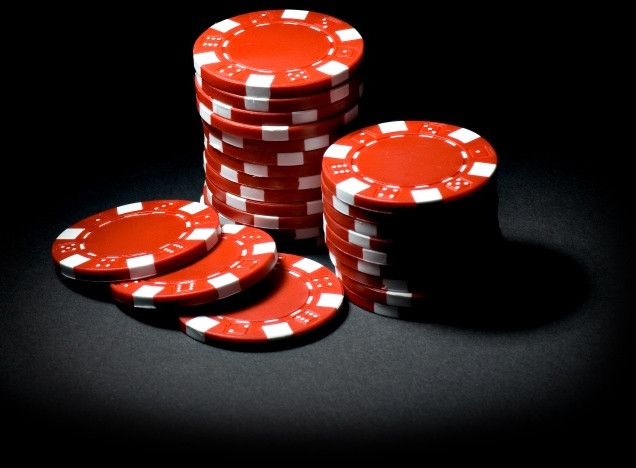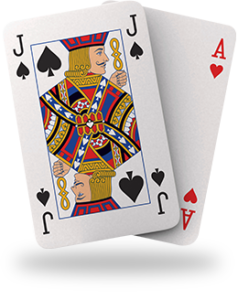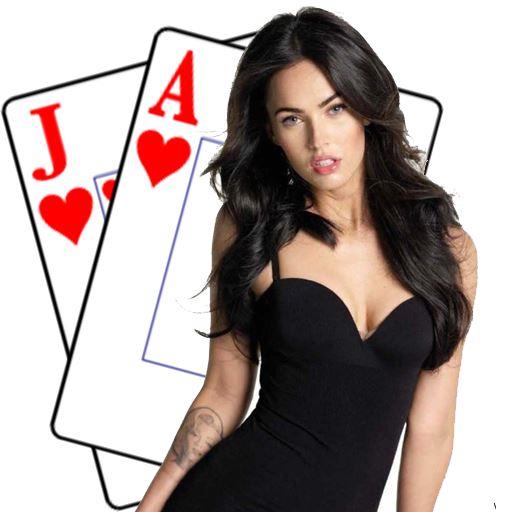- The Reviews
- UNIBET Review 2025
- MANSION Review 2025
- BETSAFE Review 2025
- BWIN Review 2025
- BETSSON Review 2025
- JETBULL Review 2025
- WILLIAM HILL Review 2025
- BET-AT-HOME Review 2025
- ZET Casino Review 2025
- CASINO.com Review 2025
- Mr GREEN Review 2025
- 888 Review 2025
- VEGAS CASINO ONLINE Review 2025
- LAS-VEGAS USA Casino Review 2025
- SUN PALACE Casino Review 2025
- ROYAL ACE Casino Review 2025
- PLANET 7 Casino Review 2025
- CLUB WORLD Casino Review 2025
- SILVER OAK Casino Review 2025
- Free Casino Games
US
- Best Online Casino Games Guide
- Choose Your Best Online Casino
- The Best Casino Games
- Online Card Games
- Best Online Machine Games
- Table Games
- Online Slots
- Complete Modern Online Blackjack Guide
- Free Blackjack Basic Strategy
- Simplified Blackjack Playing Strategy
- How to Play Blackjack Online Like Pros
- Advanced Blackjack Rules and Strategy
- Step-by-Step Blackjack Playing Procedures
- Blackjack Playing Options Guide
- Master Blackjack Card Counting
- Modern Blackjack Card Counters Challenge
- Which is the Best Blackjack Betting System?
- Nine-Count Blackjack Strategy Review
- Blackjack Myths and Errors
- Online Roulette
- Sportsbook
- Online Poker
- Online Video Poker
- Online Scratch Cards
- Online Bingo
- Online Baccarat
- Online Craps
- Asian Casino Games
- Online Keno
- Online Sic Bo
- Casino Bonuses
- Online Casino Reviews
- UNIBET Review, Casino, Sportsbook, Poker & Live Dealers
- BETSAFE Review, Casino, Poker, Live Dealers & Sportsbook
- MANSION Review, Casino, Sportsbook & Live Dealers
- BWIN Review, Sportsbook, Casino, Poker & Live Dealers
- BETSSON Review, Sportsbook, Casino, Live Dealers, Poker
- JETBULL Review -Casino, Sportsbook, Live Dealers
- BET_AT_HOME Review, Sportsbook, Casino, Poker, Live Dealers
- WILLIAM HILL Review -Casino, Sportsbook, Live Dealers, Poker
- ZET Casino Review
- Mr GREEN Review -Casino, Sportsbook & Live Dealers
- CASINO.com Review -Online Casino & Live Dealers
- Las-Vegas USA Casino Review
- Sun Palace Casino Review
- Royal Ace Casino Review
- Planet 7 Casino Review
- Club World Casino Review
- Vegas Casino Online Review
- Silver Oak Casino Review
- Free Casino Games
Nine-Count Blackjack Strategy Explained and Reviewed
According to this system he has developed, it’s possible to make $94/hr playing online blackjack at home. Although sounds too good to be true let’s give it a try so we can find out for sure.
The Nine-Count Blackjack Strategy is made up of two parts; one being the nine-count blackjack playing strategy and the other being the nine-count blackjack betting method.
Play Blackjack with those favorites Casinos
- Bonus Amount: $3,000 up to $10,000. The best daily bonuses on the internet.
- Games: An incredible number of slots, table games, and video pokers, including HTML5 games.
- Strong security protocols of 128-bit encryption
- Audited and guaranteed fair by TST
- Website: https://www.lasvegasusa.eu/casino/
- Established: 1999
- Software: Real Time Gaming (RTG)
- US and Canadians players supported
- Platforms Supported: Windows, Mac, iPhone, iPad, & Android.
- Type of Casino: Online & Instant or download.
- Free Slots Games: Yes
- Customer Support: 24/7 live chat support, as well as a toll-free phone number: +506-283-0061, and e-mail support
Write your review of Las-Vegas USA Casino
- Website: http://www.royalacecasino.eu
- Casino Type: download client, instant play, and mobile
- Software: Real Time Gaming (RTG)
- Owner: Emoney Processing Casinos LTD
- Established: 2009
- Casino Promotion: 100% Match Deposit Bonus up to $4,000, Daily and Weekly Bonuses
- Coupon Code: CASINO400
- Currencies: US$, Euros, Yen, Pounds, Bitcoin
- Mobile: both desktop and mobile compatibility
- VIP Program: 5 levels Available
- Support: World Class Support, 24/7 live chat & Toll-free phone number for USA and Canada
- Security: 128-bit SSL encryption
- Certified by: CDS (Central Disputes System)
- Languages: English
- License: Costa Rica
Write your review of Royal Ace Casino
- Bonus: 400% up to $10,000.
- Website: https://www.sunpalacecasino.eu/
- Software: Real Time Gaming (RTG)
- Deposit Methods: ClickandBuy, MasterCard, Money Order, Neteller, Visa Electron, instaDebit, Visa, MST Gift Card, Skrill, Bitcoin
- Withdrawal Methods: ACH, Cheque, Money Order, Neteller, Skrill
- Withdrawal Times: EWallets: 2-5 days, Credit / Debit Cards: 10-12 days, Bank Transfers: 7-12 days, Cheques: 21-28 days
- Pending Time: 3-7 days
- Withdrawal Limit: $5,000 per week
- Games: Incredible number of games of all types
- support: 24/7 through live chat, phone, or e-mail
- Support Response Time: 24 hours via email or Instant using Live Chat.
- Encryption: 128-bit SSL
- Audited and found fair by TST
- Languages: English.
- Progressive Jackpots: up to Million-Dollar.
- Restricted Countries: Bosnia, Costa Rica, Malaysia, Morocco, Netherlands, Russia.
Write a review of Sun Palace Casino
- Bonus: 320% Bonus + 45 Free Spins
- Casino Website: https://www.silveroakcasino.com/
- Casino Promotion: 320% Match Deposit Bonus up to $10,000 in 10 first deposits, up to $100 No Deposit Bonus, Weekly and Monthly Cashback, and much more.
- Casino Type: download client, instant play, mobile, and live dealers
- Software: Real Time Gaming (RTG)
- Live Casino: Available Live Dealers Casino
- Owner: Emoney Processing Casinos LTD
- Established: 2009
- Currencies: US$, Euros, Yen, Pounds, Bitcoin
- Mobile: both desktop and mobile compatibility
- VIP Program: 5 levels Available
- Support: World Class Support, 24/7 live chat & Toll-free phone number for USA and Canada
- Security: 128-bit SSL encryption
- Certified by: CDS (Central Disputes System)
- Languages: English
- License: Costa Rica
Write your review of Silver Oak Casino
- Bonus: First Deposit 350% Bonus + 25 Free Spins
- Website: https://www.planet7casino.com/
- Casino Type: download client, instant play, mobile, and live dealers
- Software: Real Time Gaming (RTG)
- Live Casino: Available Live Dealers Casino
- Owner: Emoney Processing Casinos LTD
- Established: 2008
- Casino Promotion: 200% Match Deposit Bonus up to $4,000, and much more.
- Currencies: US$, Euros, Yen, British Pounds, Bitcoin
- Mobile: both desktop and mobile compatibility
- VIP Program: Available
- Support: World Class Support, 24/7 live chat & Toll-free phone number for USA and Canada
- Security: 256-bit SSL encryption
- Certified by: CDS (Central Disputes System)
- Languages: English
- License: Costa Rica, Cyprus, the United Kingdom, and the Netherlands.
Write a review of Planet 7 Casino
- Bonus: Get 300% Match up to $3000 FREE Welcome Bonus
- Website: https://www.clubworldcasinos.com
- Software: Real Time Gaming (RTG)
- Mobile: Android, iPhone, iPad
- Casino Type: Download, Instant Play, Mobile
- Currency: US dollars
- Language: English
- License: Curacao
- Owner: Club World Casinos Group Casinos
- Established: 2005
- Audit: RTP Not publicly audited
- Currency: US dollars
Write a review of Club World Casino
- Bonus: Get 300% Match up to $3000 FREE Welcome Bonus
- Website: https://vegascasinoonline.eu/
- Established: 1999
- Software: Real Time Gaming (RTG)
- Currencies: US$
- US and Canadians players: supported
- Bonus Amount: up to $11,000 Match Bonus
- Platforms Supported: Windows, Mac, iPhone, iPad, & Android.
- Type of Casino: Download & Online Instant Play.
- Free Slots Games: Yes
- Owner: Main Street Vegas Group Casinos
- License: Costa Rica
- US Customer Support: (877) 691-5124
- Canada Customer Support: (888) 387-6717
- Email Address: [email protected]
- Live Chat: Yes
- Response Time: 24 hours via email or Instant using Live Chat.
- Languages: English.
- Progressive Jackpots: up to 1 Million-Dollar.
Write a review of Vegas Casino Online
The Nine-Count Blackjack Strategy rules for hitting and standing
The Nine-Count Blackjack Strategy rules for hitting and standing are fairly simple:
1 If the dealer has an up-card of 7 or higher, keep hitting until you have a 17 or higher.
2 If the dealer shows an up-card of 4, 5 or 6, stand at 12 or better. You will only hit if your hand is 11 or lower.
3 If the dealer has a 2 or 3, stand at 13 or higher. You will only hit it your hand is 12 or lower.
Notice that when a player draws to a soft hand, it may become a hard hand. If the player draws to an A,7 and receives a 7, he now has A,7,7, for a total of 15. Here the Ace must be counted as having a value of 1 to avoid busting. With his soft hand converted to a hard hand, the player will now use the rules for hitting and standing for hard hands. Since his total is now 15 versus a dealer’s 10, he must draw again, even though his chance of busting is high.
The Nine-Count Blackjack Strategy: Doubling Down
Doubling down is a valuable player option in that a player may double his wager in favorable situations. The only disadvantage to the player is that when he doubles down, he may draw only one additional card. Doubling down is used in two ways to increase the player’s prospects of winning a hand. A player will double down when the dealer’s up-card is so weak and the dealer so likely to bust that the player wants to take advantage of the dealer’s weakness to try to double his winnings. A player may also wish to double down if his first two cards are so strong that he is likely to win against the dealer by beating the dealer’s total.
The most important thing to consider in doubling down is the high probability of drawing a 10-value card. Thus, the player will double very aggressively when his totals are hard hands of 10 or 11, as by drawing a 10-value card his totals will become 20 and 21. With a hard 9, he will double less aggressively, as the prospect of drawing to a total of 19 does not give him as strong a hand as a 20 or 21.
The player will never double on hard hands of 12 or more as drawing a 10-value card will bust his hand.
The ten factor affects doubling against the dealer stiffs. The player will double very aggressively against the dealer up-cards of 4, 5, or 6 as the dealer’s probability of busting is high.
In contrast to doubling with the hard totals of 9, 10, and 11, where the player expects to beat the dealer’s total, with soft hands he will double with the expectation of exploiting a dealer’s stiff hand and doubling his winnings when the dealer busts. Consequently, the player will double certain soft hands only against the dealer’s stiffs of 3 to 6.
Soft hands of A,2 and A,3 are the weakest soft hands for doubling, and they will be doubled only against a dealer’s weakest cards of 5 and 6.
Soft hands of A,4 and A,5 are slightly stronger candidates for doubling in a multiple deck game, and the player will double these hands when the dealer shows an up-card of 4, 5, or 6.
A with 6 and A with 7 are the best soft hands for doubling. Because of the high probability of drawing a ten, these hands have a good chance of becoming 17 and 18 respectively. The player will double these hands against any dealer up-cards of 3, 4, 5, or 6.
A and 8 totaling 19, and A with 9 totaling 20, are powerful totals in themselves. They will never be doubled as the risk of destroying a good hand is greater than the possibility of improving the profit picture by doubling.
The Doubling Rules for the Nine-Count Blackjack Strategy
Only double down as follows:
- 11 vs a dealer 2-9
- 10 vs a dealer 4-7
- 9 vs a dealer 5-6
The Nine-Count Blackjack Strategy: Splitting Pairs
Virtually all casinos allow the player the option of splitting pairs. In Nevada, pairs may generally be split and re-split (if a like-valued card is dealt with a pair already split), up to a total of four hands. In Atlantic City, pairs may be split only once, although a split pair may be doubled down, an option which is not offered in most Nevada casinos.
Splitting pairs may be advantageous to the player for two reasons. First, it offers the option of turning a weak hand into two potentially stronger ones. It is always advantageous for a player to split an 8,8, as a 16 total is the weakest possible hand. Two hands with starting totals of 8 each have a good possibility of becoming hands totaling 18 each.
Another reason a player will split pairs is to exploit a dealer’s weakness as revealed by his up-card. A pair of 9s will be split versus a dealer’s up-cards of 2 to 9, except for 7. The reason is that in each of these cases, the dealer most likely has a weaker hand than the hands the player is likely to be dealt by splitting his 9s. As in this situation, when the dealer shows a weaker up-card, the player will split his pair in order to double the amount of money bet.
Millions of computer-simulated hands have shown that the real reason to split pairs in accordance with the Nine-Count Blackjack Strategy’s Playing Strategy is that this move will produce superior profits.
Some pairs will never be split. Pairs consisting of 10,10, and 5,5, will never be split regardless of the dealer’s up-card. The reason should be self-evident. In each of these situations, the card total dealt is powerful enough that the player has more to lose by splitting than he is likely to gain. A 10,10 totals 20 which gives the player a high likelihood of winning. Likewise, a 5,5, for a total of 10, is an excellent starting hand, while two 5s split may give totals of 15, which are stiff hands.
These are the pair splitting rules used by the Nine-Count Blackjack Strategy:
- Split pairs of 2s, 3s, and 7s versus a dealer up-card of 2 to 7.
- Split pairs of 4s against dealer up-cards of 5 and 6.
- Split 6s against dealer up-cards of 3 to 6.
- Split 9s against dealer up-cards of 2 to 9 except for 7.
- Always split aces and 8s
The Nine-Count Blackjack Strategy: Insurance
The insurance bet is an additional bet only on whether the dealer has a natural. Since the Ace is already showing, the player is wagering on whether the dealer’s hole card is a ten.
Making the insurance bet does not increase or decrease the chance of winning the main bet.
It is strictly a side bet and the main bet will be played to its completion regardless of the outcome of the insurance wager. If the dealer has a blackjack, then insurance pays 2 to 1.
If the dealer doesn’t have a ten as his down card, and therefore a blackjack, then the insurance bet loses.
It is possible to compute the disadvantage of the insurance bet. If the player is not counting cards and has no knowledge of the card played, then he can assume that the remaining cards are in the same proportion as a full deck. With tens, jacks, queens and kings all valued at 10, the proportion of 10-valued cards compared to non 10-valued cards is: 16 ten valued cards/52 total cards or 4/13. Thus the chance of winning the insurance bet is 4/13.
The chance that the dealer’s hole card is not a ten is computed as: 36 non ten valued cards/52 total cards, or 9/13 The expected value of an insurance wager is calculated by adding the probabilities of the outcomes multiplied by the payoffs, for:
Expected Value of Insurance = 4/13(2) + 9/13(-1) = -1/13 or -7.7%. Here is the rule for Insurance for the Nine-Count Blackjack Strategy: Never take insurance.
The Nine-Count Blackjack Strategy: Surrender and Early Surrender
Surrender, sometimes called “conventional surrender,” and early surrender are options not available to the player in most blackjack games.
Early surrender was offered in the early days of Atlantic City blackjack and has not been available for years. With early surrender, a player can choose the option of surrendering half of his wager before the dealer checks to see if he has a blackjack. This option significantly reduces the house advantage. The following chart shows how to correctly use the early surrender option.
Early Surrender
Dealer Up-card | Surrender (Hard Totals) |
A | 5-7 |
10 | 14-16 |
9 | 16* |
* Split 8,8 instead of surrender. | |
With conventional surrender, the player may surrender and thereby lose half of his wager only after the dealer has ascertained that he does not have a blackjack. With conventional surrender, the surrender option is removed from the player if the dealer has a blackjack, and for this reason, it is not as advantageous to the player as early surrender. The chart below shows the correct strategies for conventional surrender.
Conventional Surrender
Dealer Up-card |
| Surrender (Hard Totals) |
Single Deck | Multi Deck |
|
10, A | 9, 10, A | 16* |
10 | 10 | 15 |
10 | – | 7 7 |
*Split 8,8 instead of surrender. | ||
There is no provision for Surrender in the Nine-Count Blackjack Strategy.
Was This Helpful?
Recommend us on Facebook










